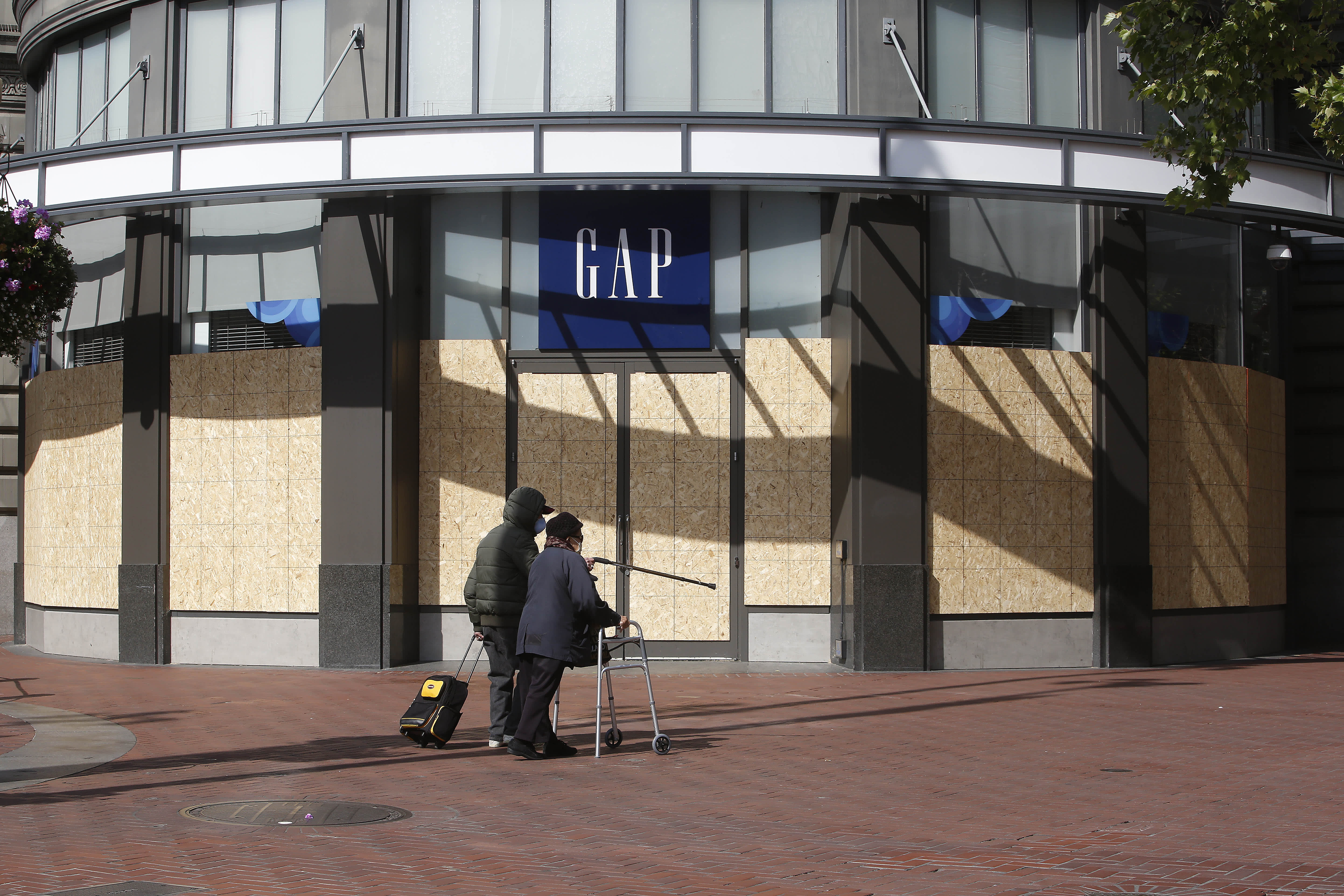Gap Inc. said Thursday its total sales tumbled 18% during the latest quarter, as e-commerce revenue surged 95% from a year ago, but those gains were offset by a 48% drop in store sales during the coronavirus pandemic.
It swung to a net loss from a year ago, as the lower sales combined with additional shipping expenses for all of those online orders weighed on profits.
Its shares jumped more than 6% in after-hours trading.
Here’s how Gap did during its fiscal second quarter compared with what analysts were expecting, based on Refinitiv data:
- Loss per share: 17 cents vs. a loss of 41 cents expected
- Revenue: $3.28 billion vs. $2.91 billion expected
For the period ended Aug. 1, Gap posted a loss of $62 million, or 17 cents per share, compared with net income of $168 million, or 44 cents a share, a year ago. That came in better than the 41 cents per share loss forecast by analysts, based on a Refinitiv poll.
Sales fell about 18% to $3.28 billion from $4 billion a year ago, beating analyst expectations for $2.91 million.
The retailer, which also owns Old Navy and Banana Republic, nearly doubled its e-commerce business during the quarter, Chief Executive Sonia Syngal said, as customers stocked up on basic tees, workout shorts and pajama sets. Gap also has been selling face masks to protect against Covid-19 — to individual consumers and in bulk to other businesses — which is expected to have contributed to sales.
Same-store sales, which track the sales online and at stores open for at least 12 months, were up 13%, the company said, driven by the strength of its online business. The 13% figure only accounts for the days that Gap stores were physically open for business during the quarter, however. Gap said it added 3.5 million new digital customers during the period.
Sales at its namesake Gap brand were down 28%, consisting of a 75% increase online and a 55% decline in stores.
At Old Navy, which has been one of Gap’s strongest performing brands of late, sales fell 5% overall, consisting of 136% growth online and a 36% drop at stores. Gap said its Old Navy shops located away from shopping malls have been performing better than others, as they reopen, “and continue to be an advantage.”
Banana Republic sales dropped 52%, consisting of a 26% jump online and a 71% in stores. This brand, which focuses on offering clothes for men and women to wear to work, has been at a disadvantage during the pandemic, Gap said. It said it is still working to shift Banana Republic’s inventory to offer more casual fashion.
Within Athleta — Gap’s athletic apparel brand for women that competes with the likes of Lululemon and Nike — sales were up 6%, making Athleta the only division within Gap Inc. to see overall revenue increase. Athleta’s online sales were up 74%, while store sales were down 45%.
Gap ended the quarter with $2.2 billion in cash and cash equivalents on its balance sheet, adding it is in a “solid financial position to navigate through the ongoing pandemic and continue investing in its business.”
It said it recently secured a $1.87 billion asset-based revolving credit facility, replacing its prior $500 million unsecured revolving credit facility, which it has yet to borrow against and does not expect to access this fiscal year.
The company is not offering an earnings outlook for 2020 at this time, however, due to the uncertainty from the global pandemic.
As of Thursday’s market close, Gap shares are down less than 1% year-to-date. It has a market cap of $6.5 billion.
Find the full earnings press release from Gap here.
This story is developing. Please check back for updates.
